|
Let's get straight into this one. I am often asked about my opinion of being a mobile service compared against being a unit based one. For those who are only just tuning into the blog or Detailed By Andrew social media, or are even just relatively new customers, I wouldn't blame you for thinking of me as "Andy that turns up in the van". It may be a new story for some, or a tale repeated just like Groundhog Day to others: I was unit based from September 2012 right up to my last appointment at Building 53a at Pensnett Trading Estate in June 2014, with a refurbishment notice period lasting until the final relinquish of the keys in the following September. The story I am about to write about probably isn't going to have much in the way of structure in a literature sense, so I don't expect any newspapers to be knocking my door to offer me an editorial column any time soon. So, where do we start? Unit? Or mobile? Do I delve into the benefits and pitfalls of each for the customer, or the professional, first? I'll go with unit firstly, because this is primarily what most Valeters and Detailers set their goals to achieve working from one day. Being unit based has many advantageous merits, the most obvious being that you are, in theory, weather proof at all times, and you are not bound to the elastic band effect of our country's sunrise and sunset times throughout the year. Being unit based offers many working environment benefits that lend well to carrying out full paintwork corrections, ceramic coatings, and other intricate areas of the trade. I cast my mind back to the halcyon days of my unit based era, and look fondly on being able to walk into the cafe two doors down to get a jacket potato with butter, cheese and beans down my gullet in the morning before cracking on with the day. There was next to no setting up, as I filled my buckets up the night before; it was just a case of waiting for the customer to turn up. But what if the customer never turns up? People sometimes wear rose tinted glasses seeing that being unit based means everything goes like clockwork and you experience no tediums. If it rained, or was forecast to rain, customers would cancel their detailing work in the abject mindset that getting a bit of rain of the car during the drive home rendered my restorational cleaning and polishing a waste of time. Perhaps it slipped their mind that if it didn't rain today, it was still probably going to rain tomorrow. I allow for prestigious special cars that do not ever get wet, but a runaround has no excuse. Sometimes it's not even the rain, I experienced far higher number of time wasters when being unit based, who would book in and either not turn up, or turn up two hours late, resulting in my schedule descending into total chaos. To the average customer without enhanced rationale, it didn't matter if they were late or failed to show up, they just did not care about the net losses to your income suffered; they didn't realise there were more customers for you to be giving your time to instead. Another aspect to consider when unit based is that you are financially committed to paying for the rent, council tax (where applicable), water, heat, electricity and so forth. If you have no work to do in dismally quiet spells, you still have to pay these fees. Couple that with a total mis-calculation of operating cost and therefore prices charged for time and service, and your bankruptcy is on an egg timer. Being unit based has excellent benefits when things go well though. You can work into the night to get things turned out in fewer days, and if you work smart, you can start a process on one car whilst another car has a process waiting to cure or dry. The advent of specialist coatings lends well to being unit based, as you have more control over temperature and humidity - although doing so adds more to your electricity and/fuel bill - something you must factor into your pricing as Joe Public often fail to think of these little things. On the other hand, being mobile allows the flexibility of not being geographically bound. If you offer a service that leads a customer to believe you are the person for the job, despite being 200 miles away, you can still service them. Building up a reputation to a point where customers want you to travel shows that you are doing something right, and the customer barely has to get out of bed for the work to be done. Also, some of the more prestigious cars that I work on would not be left out of their owners' sight, not a cat in hells chance. So being mobile ensures the customer has peace of mind that their cherised car is worked upon in a manner that they can spectate and see the processes involved. The benefit of being mobile means that you spend time with the customer in person, allowing them to witness how you work, build up an understanding of your process and witness your skill first hand. It goes without saying, I receive far more tips being mobile than I did being unit based, purely because customers see just how hard I work on their car. The perils of being mobile lie within our unrelentingly erratic weather patterns. Sure, a gazebo can be used in moderate conditions but this still limits you to a certain level of machine polishing and net result, and if it is very windy you might as well hang on like Mary Poppins. Ceramic coatings should not be applied or left to cure in damp weather so their outdoor application rests in the mercy of a good Summer's day. Though I will say that my gazebo, especially with side walls does a good job of emulating dry conditions at times. Some time soon I will be re-investing in an even larger gazebo so that large cars can fit inside, with side walls fitted around, so much so that I can say "Welcome to Devvo's studio mayte!" The nature of detailing also revolves around being able to view and give appraisal to potential customers' cars to give bespoke quotation. When unit based, people found my premises address on the internet and came to visit me. In a way, this was an inconvenience because I was easily accessible to people without putting them through "customer qualification" measures beforehand. In other words, I was susceptible to having to put my tools down and stop what I was doing in order to tend to a visitor who more often than not, was expecting me to transform their house-brick washed runaround into a Pebble Beach Concours d'Elegance show winner, with all microscopic defects and swirls removed, in return for a very generously haggled value of a pocket full of buttons. I cast my mind back to someone who came to visit expecting me to fully restore his paintwork, I gave him a price for which I was severely undercharging for at the time, and he still wanted to haggle me down by 50%! Being mobile means that you do not suffer time wasters coming to visit your premises. It's harsh, but it's true. If I had 20 people disrupt my work to a paying customer's vehicle per day, I simply would not get any work done. Now, I can simply allow the phone to ring, and anyone serious about wanting professional services being provided will leave a voicemail if I do not answer their call for failing to hear the phone ring above the sound of the machine polishers, or myself talking face to face with a customer. A major perk of being mobile is that you see so much more scenery and everything is different each day. I certainly enjoyed Buxton Hills on my way to a job in Manchester last year. The main point about being mobile for me is working on special cars that do not leave their owners garage, or is an inconvenience for them to take the car to a unit based company. The cons of being mobile here is that you may sometimes have to take time out to travel and view the cars where bespoke high-price services are concerned. Last year, I driven 35 miles to the other side of Birmingham to view a car for somebody who was so serious about having a detail, yet I never heard back from him. So that was 70 miles of fuel, tyres, wear and tear, not to mention nearly 3 hours of my day wasted. You have to be smart when dealing with these things, as I see this happen to fellow professionals a lot.
These days, if a car is in want of serious detailing work, the customer should be prepared to pay for an inspection if they can't bring the car to me. Nobody should be expected to drive around giving professional advice for free. Such as earlier this year, where I heard from the grapevine that someone did not book in purely because I refused to disclose what polishing compound and pad combination I was going to use. Firstly, I do not know until I test any combination on the paint, and secondly, asking me for that information is a bit like asking Mr Krabbs to part with his beloved Krabby Patty formula. Not today, Plankton! There is indeed a reason why some of my products are decanted into plain bottles. I have to protect the knowledge that I have accrued over the years in the interest of my business. I thoroughly enjoyed my time being unit based, and do not regret a single moment of it. Indeed, I have carried a lot of customers forwards from this era, and whilst I can look back on these days with the song "I dreamed a dream in time gone by" almost going through my head, I am enjoying my mobile work even more-so. Have you ever driven through Buxton Hills? The Rabbit Run on the way to Welshpool wasn't too bad either, where I kept up with "The Stig's Fat Bald Ginger Cousin" on the twisties. The adventure of going somewhere new every day is so exciting, and if you are lucky, the customers make the cups of tea for you! Blurb: What are these random pictures? The pictures dotted throughout this blog post are of works that are still distinguished in my mind of my time at Building 53a, some as far as 5 years ago. The Toyota Carina E stayed with me for over 48 hours to take it from a minging Grandad car to a fully corrected Time Warp. I also remember the Skoda Superb as a picturesque model of my paintwork correctional work at the time, despite my tools and equipment being so spartan in stark comparison to these days (my money was taken up by the rent, rather than ability to re-invest)... and of course, how could I forget the Nissan GTR!
7 Comments
In the words of Alex Ferguson; it's squeeky bum time. I was trusted to work on this stunning 1990 Testarossa to improve its paintwork as much as possible in one day. This is a 1990 model, with very little over 21,000 miles on the clock, and has been in the ownership of the current owner for over 18 years. If anyone knows this car back to front, it's going to be him. With no disrespect to my usual customer base, this is a very different calibre of car to what I am used to day in day out, not just in its heritage and value, but the fact that it is meticulously cared for and kept clean. In this particular instance, there was no need for the 3 or so hours of washing, decontaminating and clay barring like I have to on daily driven vehicles when carrying out a detail. This was to be a bespoke service not outlined in any set service package. Instead, the initial part of my visit was spent with the customer learning about the car and receiving valuable information on the task at hand, before he left for work to leave me to spend 1 and a half hours just studying the car. Indeed, before even contemplating touching the car, I analysed some of the defects under digital microscope, as unfortunately there were some issues to consider. In the above pictures, you can see what swirls, micro-scratches and random isolated scratches look like in magnified view. However, these were the least of my concern when the owner told me that the car had been detailed many years ago and the detailer had struck through the paint. My initial thought was, "how can it be possible to strike through single stage paint, to reveal another layer of red?" but a quick lesson in the history of the car from the owner taught me that Ferrari painted these cars in a very special manner. You see, in order to get a mirror like finish from the factory using single stage paint (that being, just colour, no clear coat like modern cars), they would apply a fine layer of colour, sand it back flat by hand, apply another fine layer of colour, sand it back by hand, and so forth ad infinitum. Put simply, there were many layers to this cake. Throw into the mix that some panels had been repainted and you have one very tricky car to level out by machine. I had to approach this carefully using initiative if I were to avoid emulating the previous detailer's mistake of striking through to another red layer of paint. So, I taken dozens of paint readings from each panel, and studied their meaning to assess how to approach each panel. Their readings were, lowest thickness to highest per panels are as follows, in microns: Roof: 121-191 Bonnet: 258-451 Offside Front Wing: 127-196 Nearside Front Wing: 127-217 Offside Door: 131-328 Nearside Door: 115-184 Offside Sill: 278-329 Nearside Sill: 309-1165 Offside Rear Quarter: 155-242 Nearside Quarter: 121-216 Boot: 175-377 It may just appear to be random number to you, but the intra-panel differences highlighted the need to be careful of the fact that these cars were hand painted and flatted down, as well as this particular car having been cut back before. The aforementioned area of strike-through was on the nearside quarter, where readings were around 120-140 microns in the damaged area. On a modern clear coated car, this would be a very healthy figure. I could literally see in numbers where readings started to increase across the panel - so I knew where I was safe to cut. The absence of a need to do heavy cleaning and prep like I have to on "normal" daily driven cars meant that I could do a two set machine polish in one day, meaning the first set being a specially selected cutting compound and pad combination, and then a refining polish and soft pad combination. The choice of machine used was also paramount.
After the machine polishing process, I applied Swissvax Best of Show to the paintwork and wheels. To ceramic coat a car like this would be a little absurd in my opinion, as a permanent coating applied to such a historical document of a car would almost spoil its heritage. Cars of this ilk prove that there will always be a place for wax. There were many fiddly areas to get in and around, before the interior was treated with leather conditioner. All told, this visit taken around 11 hours of solid working time. I couldn't get the paintwork 100% blemish free, because doing so would have involved using high levels off cut too risky of causing strike-through, but I removed a moderate amount of defects, and left it with a sharp reflection. I worked as carefully and attentively as possible, no phone calls were answered this day as I needed maximum concentration without distraction; if I damaged this car I just don't think my confidence would have ever recovered. Also, it was encouraging to be so trusted to do this work, without being watched over, checked upon or otherwise - this enabled me to relax and focus. The time absolutely flown by, in fact I lost track of time. It's a another milestone and privilege for me to have this car in my portfolio. But there is one thing I would like to address before people jump to conclusion and spread rumours that I only work on high-spec cars - I am not above working on any car, in fact, my next job may well be a clapped out old Transit van. I stay humble, you keep yourself factual! Enjoy the pictures below! Most of my case studies up until now have involved the higher specification Detailing service packages, so I thought I'd break it up a bit with a Service Clean variant carried out on this 2015 Range Rover Sport. This was booked in by the owner about a month ago and carried out last week - back in June and July I had a waiting time of around 4 weeks because of the great weather we had creating an influx of customers searching the internet for this kind of work. Recently though, the weather has been absolutely dismal. Perhaps we should rename the kids' "Six Weeks Summer Holidays" to "Six Weeks of TV and Sega Megadrive"? On arrival, it was clear to see that the car, whilst kept clean, suffered from incorrect wash technique. Sure, it is naive to think that a vehicle will stay swirl free forever (we do not live in an idealistic world, sediment and debris as well as the fact that any form of contact with paint has the potential to mark it), but this doesn't change the fact that a proper wash regimen would have prevented the eyesore in front of me to a large degree. I mean, the car looks great, it's just the finish! What I like to call the "meet and greet" is essential when visiting a new customer. You can gauge what they are going to be like to deal with (99% of my customers are lovely, as I can 'vet' them on the phone, the customer here being no exception), what they expect, and also gain valuable clues about the vehicle's history and what you may expect to uncover. So off I start getting set up, filling up the buckets and starting with the wheels. Instantly I clock that they are a matte finish, so a good bit of product knowledge had me reaching into the van for Krystal Kleen Detail Matte Wash. When working on any kind of matte finish, you need products that do not have gloss enhancers, and also contain very gentle surfactants. The wash technique I use for wheels is pretty simple to grasp. Pre-rinse, bog brush in the barrels, paint brushes in the bolt holes, and loofah to clean the face and backs of the spokes. Making an attempt to clean the backs helps keep the faces cleaner for longer, as there is less mess to trickle outwards when the car is driven in the rain. "I like what I'm seeing", the customer declared, "I didn't know you did the inside of the wheels." It's nice to get little words of positive reinforcement when starting a job, 'we're in for a good innings'. After the wheels were cleaned, the bodywork was soaked with pre-wash and then pressure rinsed of any loose sediment and grit that is obviously not wanted when contact washing. This is the first step of ensuring that the paintwork is put to as little risk of marring as possible. Not all professionals subscribe to this particular wash method, but I like to use snow foam as a lubricant when contact washing, re-applying to any dry areas. Beginning with the top and the glass, moving on to the front end, sides, rear, door shuts and then the yucky bits underneath. I clean the 'cleanest' bits first, leaving the worst until last. It's a bit like when bath water was shared in World War 2, you didn't exactly let the one who had the dirtiest job and had eaten curry the night before in there first. In the picture above, you can see the "two bucket wash method" in action - one bucket designated to clean the wash mitt off, and the second with fresh clean shampoo water. This process of cleaning the wash mitt off before dunking back into the shampoo bucket should be carried out as frequently as possible to reduce the risk of, yep, you guessed it, marring. If the 'rinse' bucket becomes too dirty, I dispose of the water and fill it up fresh. The bodywork was cleaned in this fashion before being rinsed down and dried with mega plushy towels using a polymer detailing spray as a drying aid. Once dry, Krystal Kleen Detail SiCoat was applied. This is a silane wax blend which is my go-to protectant as standard. I'll do a blog post on different forms of last step protection in detail one day, but in short I like this because it is easy to use, isn't fussy on climate, adds gloss and has accountable water repellent behaviour. Working out at around £55 per litre, it isn't exactly a thrift store special. But I don't deal in cheap stuff. I deal in good stuff. Whilst these products are from America and I anticipate for them to be named accordingly, I just refuse to refer to them in their manufacturer's spelling. It's ALUMINIUM, dude! Even though these exhaust tips are stainless steel, it is intended for all bright work and does a great job. It's impossible to clean around badges perfectly on a nano-scale, but getting a good cotton swab laced in quick detailer spray in there helps presentation. Clean paintwork, and dullness around the badges? Not a good look. If you're new to reading my blog, I sure hope I'm giving an insight as to why the £5 car wash is a little different by now... So we're all finished up with the exterior looking pretty snazzy, and the interior given a thorough vacuum through, with tiny paint brushes used to get deep into the vents. The seats were cleaned and conditioned with Krystal Kleen Detail Lush Leather, with the interior plastics treated to Meguiar's Inner Clean dressing and UV protectant. The glass was cleaned including the top bits, and one of my many choices of smellies was applied. I went for Autoglym Golden Sunset on this one. The owner seemed quite happy with the work, and we discussed the possibility of a future visit to get machine polishing mad on his paintwork. Then, we may have one seriously slick looking car on our hands.
Out of interest I'd love to find out how long you may guess this service to have taken to carry out, and how much you personally would be prepared to pay for such a service - all part of R&D! Leave your answers in the comments below! I've had a couple of interesting jobs in lately that have received Ceramic Coating treatment, so this post will have two case studies rather than one! For those that don't know, 'Ceramic Coating' is a barrier of protection applied to the car which does what a wax does, and so much more. Firstly, these coatings are generally made up of Silica Dioxide (SiO2) or some modified variant of, which is an incredibly tough and durable material. Once applied to a surface and cured, they manifest in a durable, hard and shiny finish. "So it's a bit like that dealership stuff, then?" Yes, in a fashion and to a degree. There is a huge mistrust in dealership applied packages, and I have seen enough evidence that they sometimes aren't actually applied at all, but the customer is assured that their three figures have been well spent and that the car won't need any polishing. A professional detailer will take pride in using what they think is a good product on your car, and the benefit is that you can watch them apply it in some cases. Before I start with the write-ups, I would like to clarify that the consensus amongst most professionals is that coatings should be applied indoors. This is correct in some cases, especially with more specialised and sensitive coatings. However, having spoken with Krystal Kleen Detail/Liquid Elements UK/Feynlab UK mad scientist and proprietor Marc Linekar quite a while ago on the phone, I was imparted with the knowledge that coatings are good to go in conditions above 11*C temperature and relative humidity below 70%. Indeed, there is even a reactor product available to Liquid Elements approved technicians that help with the curing of coatings if conditions are borderline unideal. I've used many coatings over the years, the first being Optimum Opti-coat back when my business was unit based between 2012 and 2014. However, there wasn't much call for this at the time so it wasn't something I did often. It did however, contribute to how well my Peugeot 206 looked. Aside from Optimum Opti-coat, I have also used CarPro CQuartz UK. I have a customer on the books for regular cleans to a vehicle I applied this to back in November 2016, at the time of writing the car is still looking very glassy. The key to prolonging the life of a coating is keeping it clean; allowing dirt to accumulate and bind to the coating will degrade it. As Craig Hall, head of CarPro UK recently wrote in an article for the Pro Detailer magazine, coatings will start to fail on the bottom edges of the car where there is the most impact from road debris. Small pinholes will cause the coating to lift microscopically. CarPro have launched a Silica based polish called Essence Plus that is designed to repair coatings that are showing signs of wear. Here are Craig's own words in a message: "Essence Plus as mentioned is a filler polish with a resin coat that we call a "coating restorer" You've probably had the following scenario.. coat a car, 6-12 months down the line that customer comes back and the coating is still performing as new but the car has picked up some marring, maybe the customers wash technique isn't quite tip top. Essence Plus can be machined on to hide this marring, and top the coating up with a Silica resin protection for up to another 6 months. Before now, it would require polishing away the perfectly good coating to remove swirls and re-apply. So for all intents and purposes it's for the client who wants there car looking good, but doesn't want to pay out for another enhancement and re-coat 6 months later because they've picked up a little wash marring." I have also used Liquid Elements Eco Shield, but these days I am currently applying Feynlab Universal as pictured above. This particular coating product was in fact designed with fleet management companies in mind, where their particular cars will be beating up and down the motorway and seeing high wear and tear. To counter this, Feynlab designed Universal to be very strong, helping it to be scratch resistant (but not scratch-proof, remember this is coating not a forcefield) and durable. Another attractive feature of this product for me to want to use it on my customers' cars is that it was formulated to be used where prep work may not be carried out properly by fleet management companies, nor in ideal conditions. Myself being mobile, and not all of my customers owning a cushty garage for me to work inside of, was drawn to this to minimise any potential 'come-back'. Think of it this way - if it was designed to work on and protect cars that may not be looked after too well and be applied by non-detailers, then it should be perfect for cars that do get cared for and especially being applied by myself as I am very anal about the preparation process. But don't let this fact decieve you though, whilst a 250ml bottle may treat 5 or 6 cars, it still costs me £180 to buy, with my suede applicators and other paraphernalia costing more on top. I like to think I'm paying for quality. Oh, and don't forget the panel wipe, no polishing oils can remain on the surface when applying coatings. Take for example this Jaguar XE, it was only purchased new by the customer two weeks before my visit to detail and protect it. The Iron Fallout treatment identified a numerous amount of metallic deposits sintered into the paint, which were then confidently removed with clay barring. This probably occurred because the car is kept on the driveway next to a busy main road with high traffic. There were some marks and blemishes to be removed so the whole car was given a light machine polish. So there we go, not even brand new cars are defect free and the preparation and polishing processes should always be respected. I did encounter a small issue with this job, another peril of working outdoors, in the form of the gardeners turning up and blowing clippings and sediment all over the vehicle just as I had finished machine polishing. Some panels had to be re-done as a result of this, so for any potential customers that may be reading this post, please ensure that there are no destructive interferences during my visit. The following car is a 2008 Volkswagen Golf R32 that I had already detailed last year, but wanted freshly re-visiting and coating ready for sale. Enjoy the images, I even taken a microscope image of the paintwork afterwards...
|
AuthorAndrew Southall, just a guy obsessed with shining up cars. Archives
March 2021
Categories |
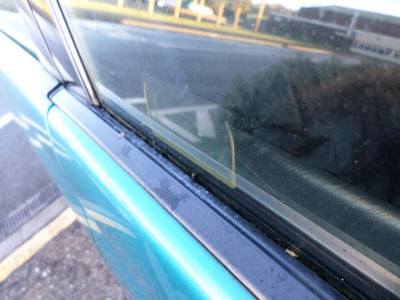








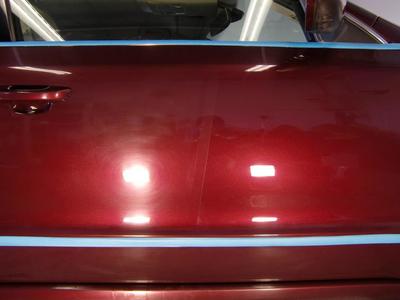






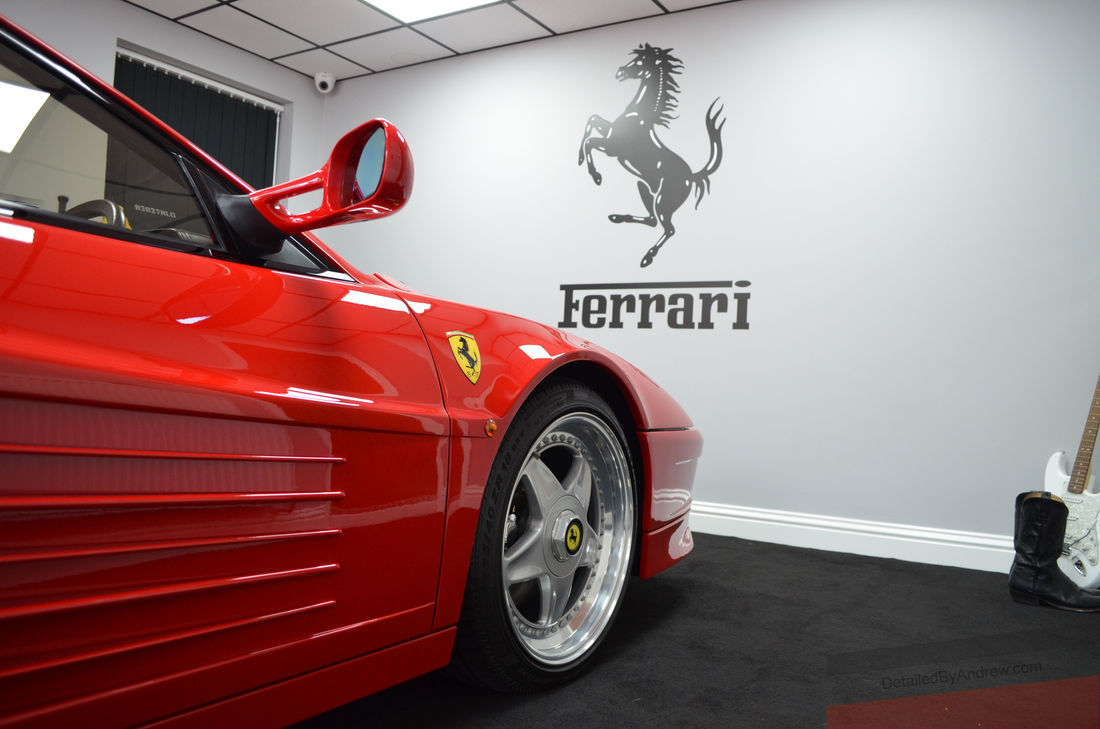






































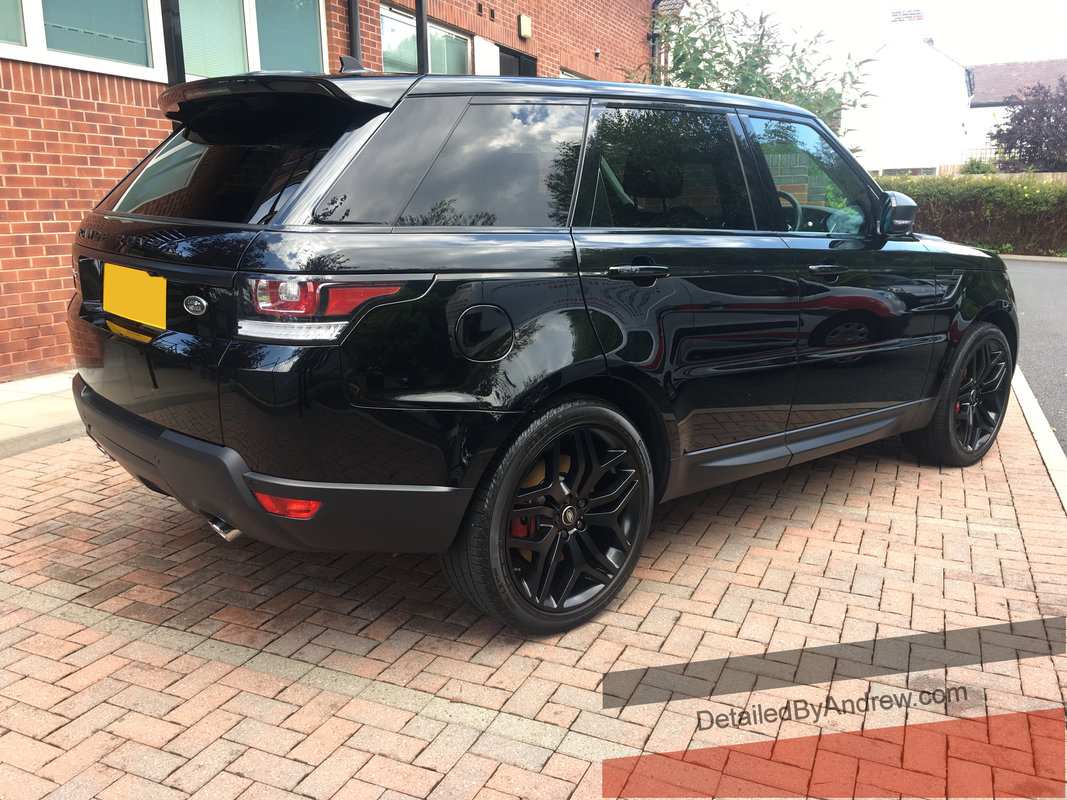





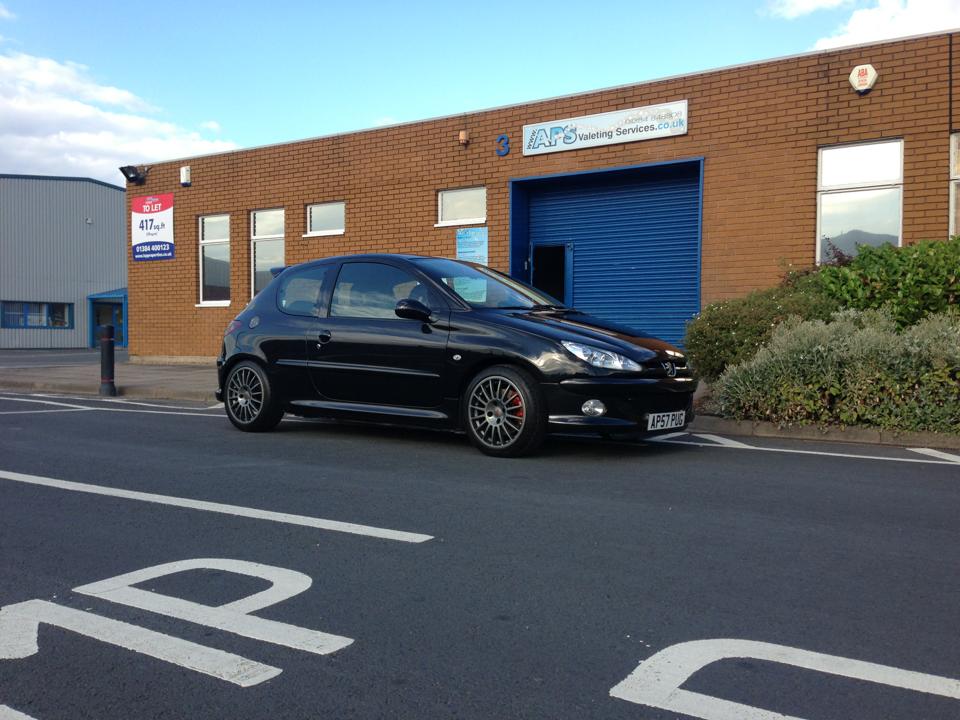






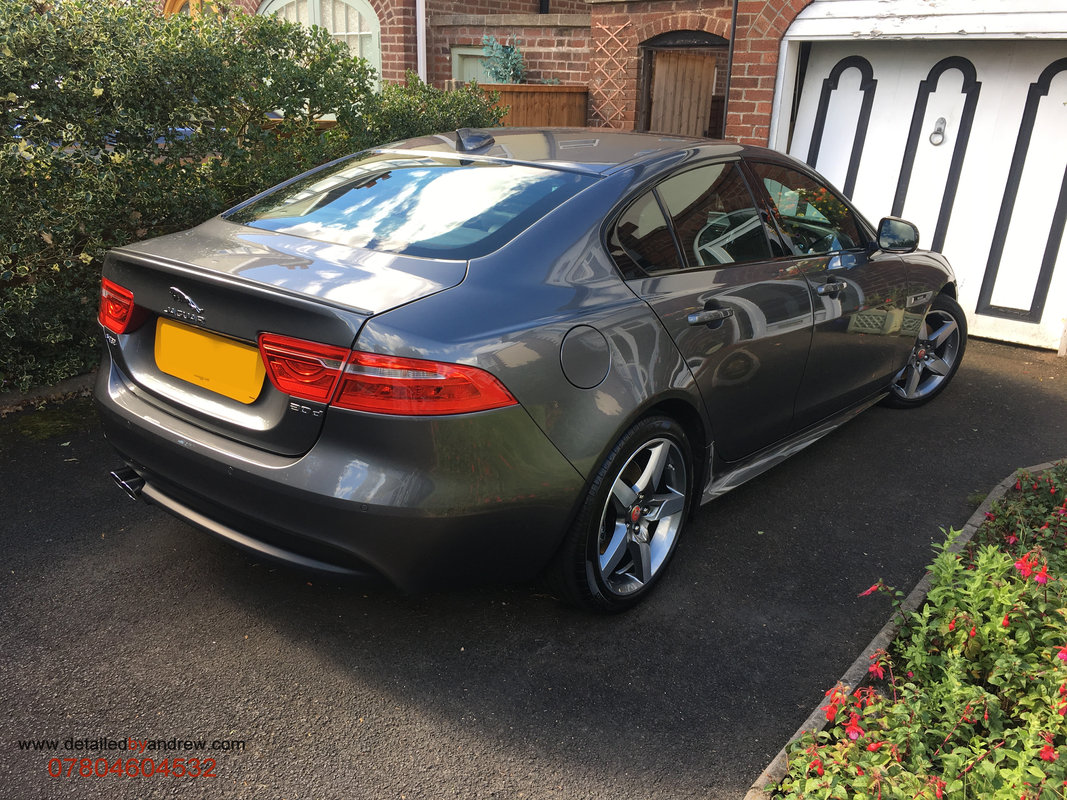




 RSS Feed
RSS Feed